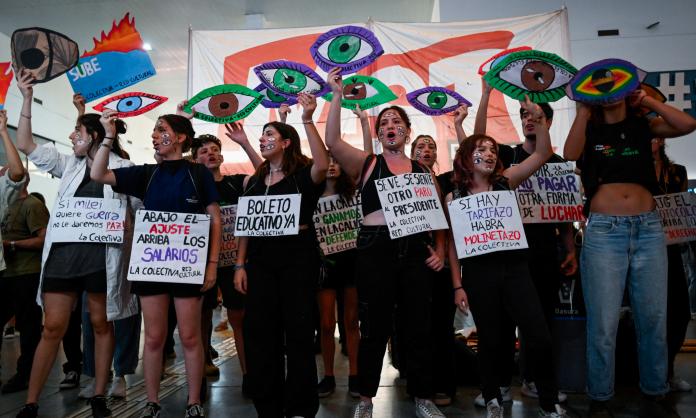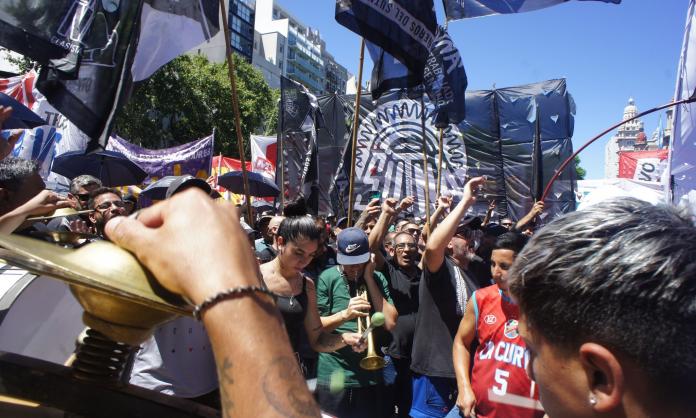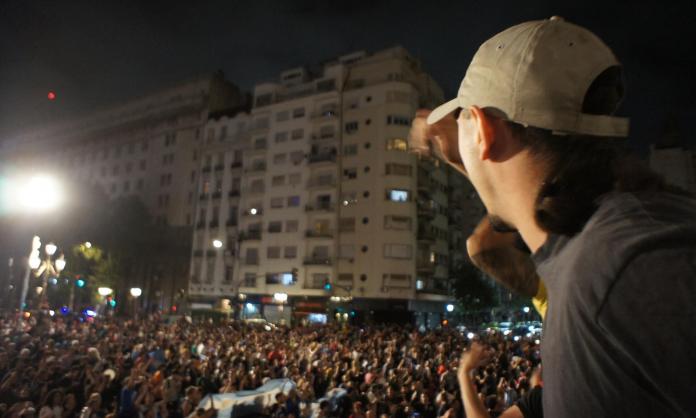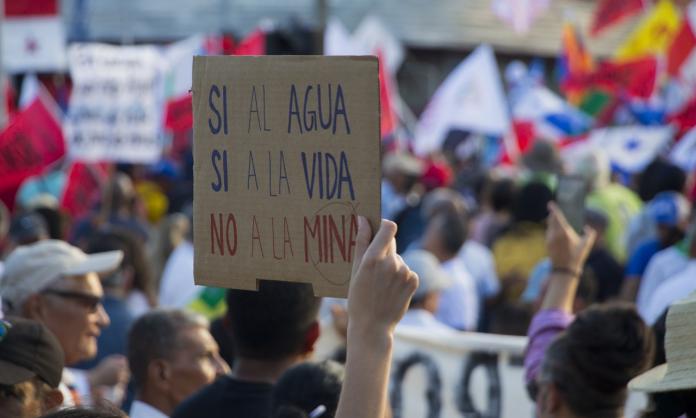Businesses are reopening in Brazil just as it becomes the centre of the global pandemic. Workers are being forced to return to overcrowded buses while the dead are buried in mass graves. But life has always been cheap here, especially Black lives. Commuter buses are being compared to the transatlantic slaving ships on which a quarter of those crammed on board died. The life expectancy of slaves on arrival in colonial Brazil, the last country in the Western world to abolish slavery, was just eight years. By the 19th century, Rio de Janeiro had the largest concentration of enslaved people of any city since ancient Rome.
Today, 60,000 Brazilians die violent deaths every year; 75 percent are Black. In some regions, police are responsible for most of the killing. They shot and killed six children under the age of 12 in Rio de Janeiro this past year, all of them Blacks from the favelas – the densely populated slums housing nearly one-quarter of the city’s inhabitants. Killings by the security forces last year were up 18 percent, according to the Public Security Institute.
Now, about 1,000 people are dying from COVID-19 every day across the country. Favelas have the highest infection and mortality rates. In poor neighbourhoods and favelas, many homes lack running water. Some neighbourhoods have been forced by local militias to keep businesses open throughout the pandemic. For many, it’s just the compulsion of economic life: more than half of Brazilian workers are outside the formal economy and will eat in the evening only if they have worked during the day.
Brazilian president Jair Bolsonaro’s relaxed attitude to the pandemic – death “is everyone’s destiny”, he said this month – is not that of an isolated lunatic, but the historically consolidated voice of a violent and racist capitalist class. In the words of Pedro Augusto de Oliveira, “As long as the bourgeois economy is safe, it doesn’t matter if the working class dies in the pandemic. After all, if one dies, another takes their place”.
But there is resistance as the pandemic exposes the callous disregard for human life that falls heaviest on the Afro-Brazilian community. The upswing in the Black Lives Matter movement in the United States has strong resonance here and the potential to energise a population that has been worn down by routine violence and exploitation.
In addition to small Black Lives Matter rallies, street protests against the Bolsonaro government have emerged for the first time since the coronavirus crisis hit, soccer fans leading the demonstrations. And at least two other anti-Bolsonaro movements gained visibility at the end of May, as the president’s neo-fascist credentials have been on full display. Bolsonaro has appeared at weekly rallies of supporters calling for the Supreme Court and Congress to be shut down and military rule reinstated. A recording of a ministerial meeting in which Bolsonaro called for the population to be armed in preparation for a possible civil war was also made public. The final straw was a pro-Bolsonaro militia marching on the Supreme Court carrying torches and wearing masks.
In response, left-wing soccer fans organised protests with pro-democracy and anti-fascist banners. “Patience in the fan club has run out”, protest organiser Chico Malfitano told news outlet UOL. “It is disgusting to see the president talking about a ‘little flu’ ... 12 of our members died from COVID-19 ... We can’t just react with a letter of complaint to the daily attack on democracy.” Malfitano also cited the “we are 70 percent” catchcry – the level of opposition to Bolsonaro as measured by opinion polls. It’s also an official campaign that was launched last month. The #somos70porcento campaign arose from a speech made by businessman Eduardo Moreira, on the same day that celebrities launched a pro-democracy manifesto entitled “We are #together”.
At least three new movements have emerged. The soccer fan clubs, although critical of left-wing political inertia, are essentially of the left, as are Antifa-identified protesters, the Antifa flag emerging as a general anti-Bolsonaro symbol. By contrast, the “we are 70 percent” and “we are #together” movements have support from across the political spectrum, including from sectors of the capitalist class nervous about Bolsonaro’s handling of the crisis. Together, the movements draw on the memory of the 1980s movement to end military rule. Brazil’s military dictatorship lasted from 1964 to 1985 and has received lavish praise from Bolsonaro, who has appointed more military officers to ministerial posts than even the dictatorship did. The Ministry of Health, for example, after failing to follow Bolsonaro’s pandemic denialism, is now in the hands of a general.
The largest left-wing party, the Workers’ Party, was sidelined in the last presidential election by bogus charges against former president Lula da Silva. The presiding judge in da Silva’s trial was rewarded with a promotion to head the Ministry of Justice, but recently broke with Bolsonaro over the latter’s interference in the Federal Police. Three of Bolsonaro’s sons are under investigation for corruption and fake news schemes, tarnishing his image as an anti-corruption and anti-establishment hero. The president has therefore been playing to his far-right base to stave off impeachment. He has even resorted to buying votes in Congress, further damaging his image with the establishment.
The traditional political left, including the Workers’ Party, has been unable to gain traction against Bolsonaro, and unions and left-wing parties are yet to mobilise. For this reason, the soccer fan protests are important and potentially the beginning of a more active and organised resistance, particularly if the Afro-Brazilian and favela-based organisations gain momentum. At the same time, the cross-class alliance and leadership of big business in the revived anti-Bolsonaro movement are a clear danger. A potential winner of a cross-class pro-democracy movement is the former minister of justice, Sergio Moro, a hero of the right-wing anti-Workers’ Party groups that until now have supported the president.
As the Bolsonaro government incites its fascist base, it faces two threats – losing traditional ruling class support and being pressured by a politicised working class based in the urban peripheries and favelas. As always in Latin America, US interests also play a key role in defining political projects. Donald Trump’s support for Bolsonaro is important, but easily withdrawn should an alternative right-wing champion, such as Sergio Moro, gain strength.
For now, an energised Black rights movement offers prospects for a left-wing response and could influence union and left-wing political parties that have been waiting for Bolsonaro to self-destruct. For any anti-Bolsonaro movement to succeed, it must retain clarity about the limitations of and pitfalls of cross-class and depoliticised alliances of the sort that emerged from protests in 2013.










